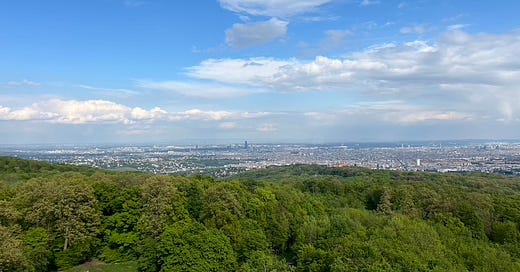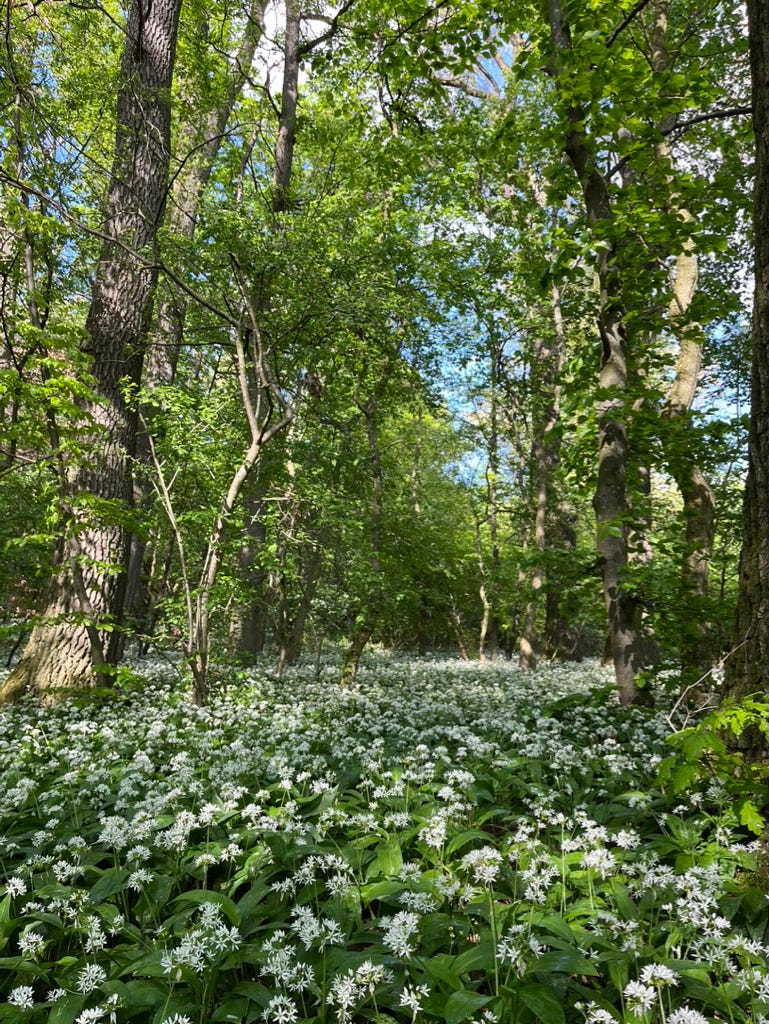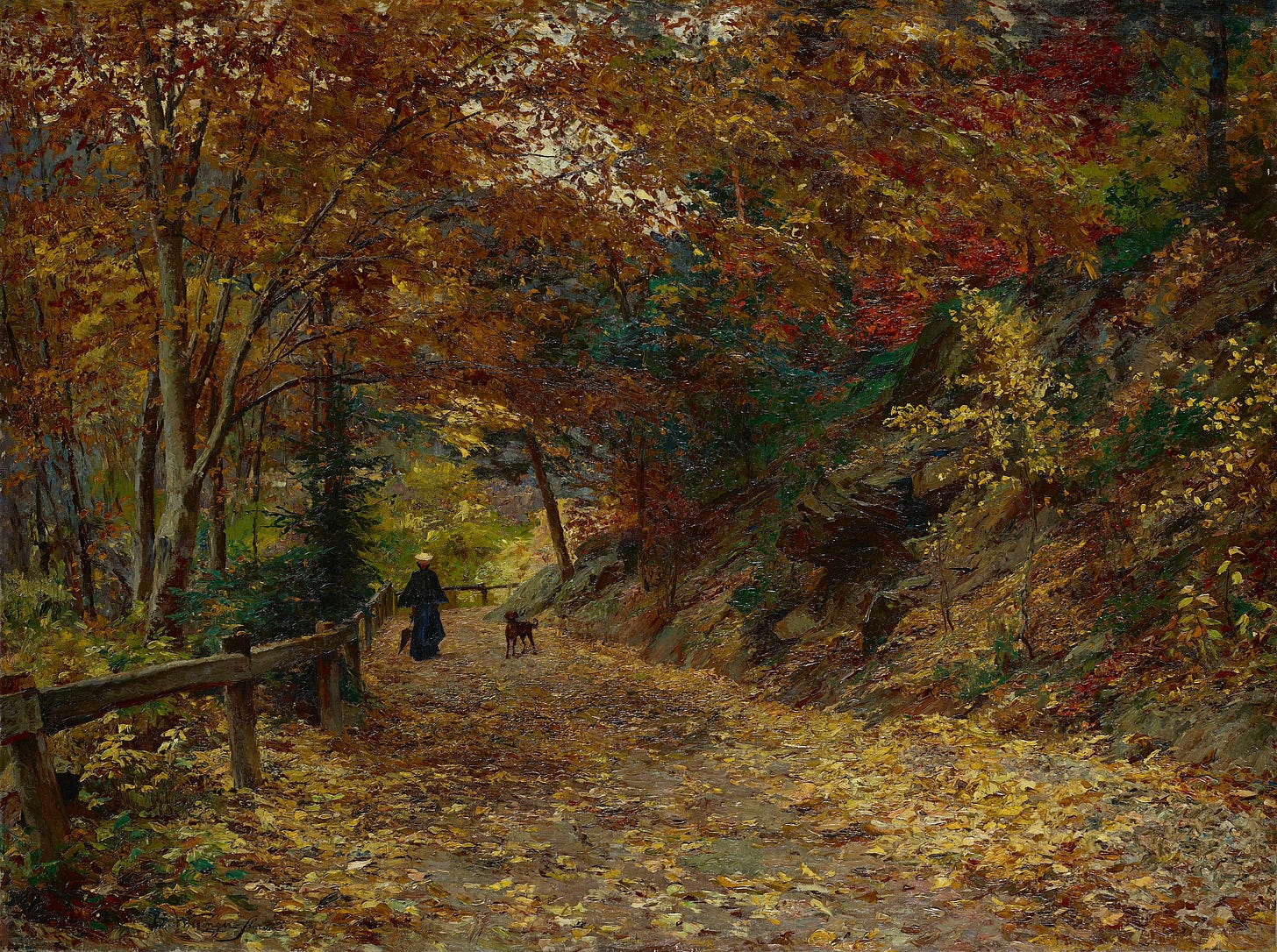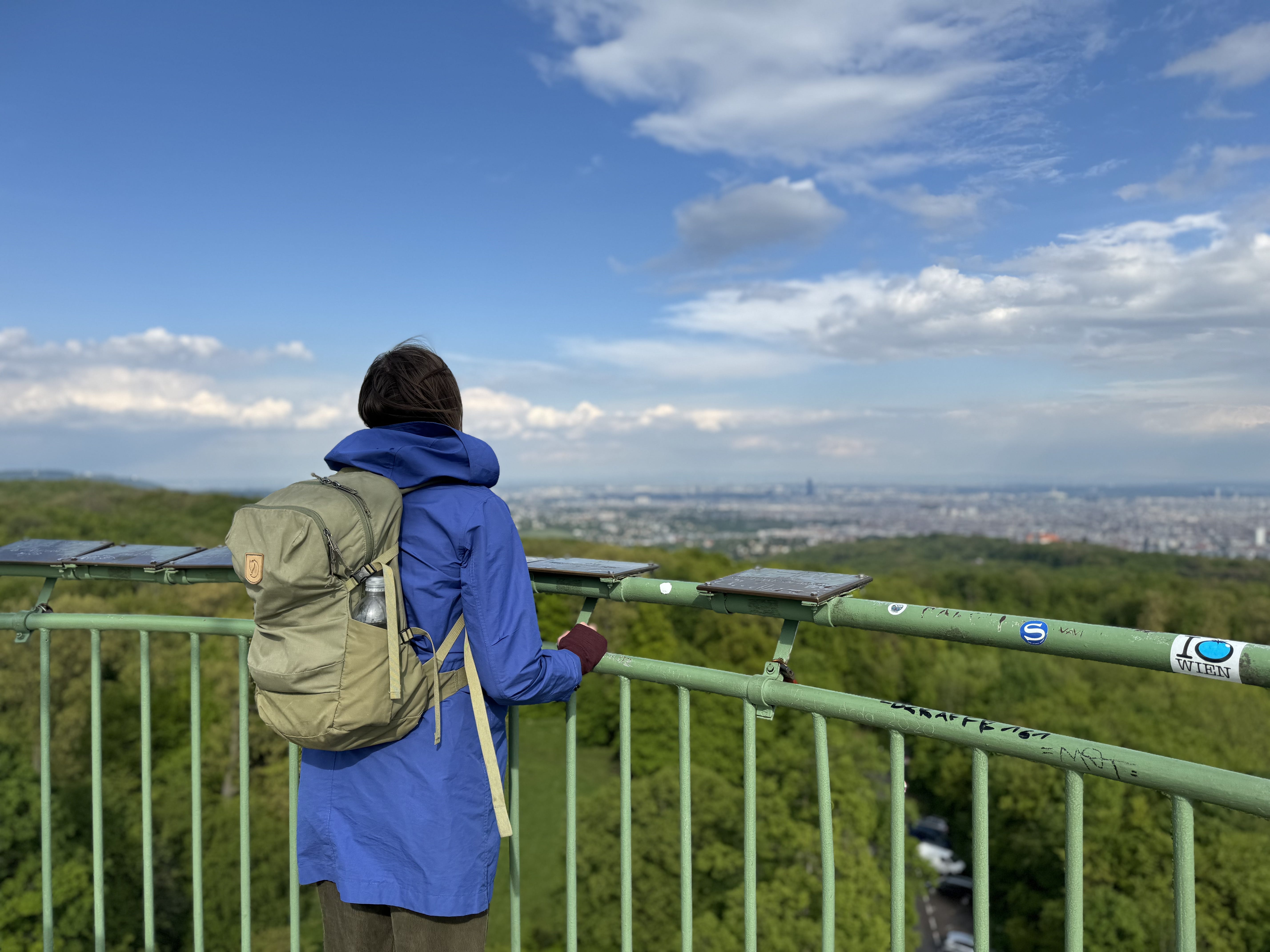Vienna beeches in leaf
Is there a point—in a time of loss—to memorizing something that has been preserved?
Leaving Cape Cod in April is always a good idea. All month the light says spring, but the weather hasn’t caught up. Sunny mornings turn grey as the sea warms and raises a thick protest of fog. I watch the trees and their buds, longing for green.
We go to Austria in the middle of the month, because Chris has a conference in Vienna. My sister Abby joins us. We spend more than a week tucked in at the friendly Hotel Henriette, on a street lined with sycamores. From our room we look out into verdant treetops, at red and black tiled roofs, and vineyards on the slopes beyond. While Chris is working, Abby and I walk through Hapsburg palaces, ride streetcars along the Ringstrasse, go to Mass at St. Stephen’s Cathedral, take selfies with “The Kiss” by Gustav Kilmt, and try to get change in 50 cent euro pieces so we can use public restrooms.
The weather varies from 75°F and sunny to 40°F and overcast. But one thing Vienna has, no matter the weather, is a canopy of young green leaves.
Our hotel room has photos taken from a tower in the Vienna Woods with a name that Abby and I can not pronounce: the Jubiläumswarte. A trip to this tower promises a rambling hike on wooded paths and a view of the city.
We ride the subway west and catch a bus. It takes us up low green hills—mountains that eventually meet the Alps—on narrow roads between terraced neighborhoods with wisteria and lilac in bloom. We get off at the last stop.
The air smells of woodsmoke. There are chalet style homes with small gated yards facing the valley. At their back is an immense woodland. The Vienna Woods cover 521 square miles. They were royal hunting grounds from the 11th century and on, settled in the 1800s, and nearly clear-cut at the end of that century when Austria entered a contract to sell lumber from this woodland to pay a debt after loosing a war. In 1987 the woodland was officially protected and now this area is designated as a UNESCO biosphere.
We enter the woods on a narrow dirt path, beside a shining steel water tap that runs with mineral-rich water straight from the Alps. The forest floor is carpeted with flowering white wild garlic, and the air is sharp with its scent.
We move slowly, mesmerized by birdsong and the sway of branches in the gentle breeze. We keep stopping to take pictures. I haven’t been in a place so lush for months. It takes me a while to notice that we are climbing a hillside populated almost entirely by beech trees.
Where I live on Cape Cod our beech trees are dying. There is a parasite eating the leaves before they open in spring. It can kill a tree in just a few years. Last spring many of their leaves didn’t open. When my local newspaper wrote about it, the arborist they interviewed spoke of it as something inevitable, something they would document as it ran its course, until no more beeches remained.
I’ve loved beech trees for much of my life. There was a stand deep in the woods behind one of my childhood homes, where one of my brothers and I would climb. We favored the central tree for a cruel reason—our younger sister couldn’t reach the lowest branch—and we made a great show of climbing it just to exclude her. But I also loved it for its smooth bark and crooked shape. The top boughs forked perfectly so I could lie back and watch the sky. It swayed with the wind. Before we moved from that house, I carved my name into the trunk.
When I walk under beeches on the Cape, I usually feel grief. I stop and put my hands on their trunks. I check to see if there are any leaves left in the crown. I want to memorize everything about them, because they are something I am going to lose.
While we wander the Vienna Woods, I recognize them as the setting of a painting that captured my attention at the Belvedere Palace earlier in the week. I paused in the museum because it was a portrait of a woman and her dog (a genre I cannot resist). The woman is wearing a black Victorian dress with puffy sleeves, the dog looks like some kind of setter, and they are standing on the curve of a path—here in this same woodland—surrounded by yellow and orange autumn trees.
“Falling Leaves” was painted by Olga Wisinger-Florian in 1899, not long after a protest campaign prevented clearing of the Vienna Woods. Later I read that she was one of the female members of Austria’s modern art movement known as the Secession, taught fellow female painters, and was a dedicated proponent of women’s rights. Her art originated in a moment of idealism before both World Wars.
The collection at the Belvedere has careful narratives beside paintings, is intentional to include work by women, has rooms dedicated to art that responds to the Second World War, during which many artists were driven from Vienna and never returned. One plaque in a room of post-war paintings asked “what is the point of art after the holocaust?”
A similar question exists beneath all our travel, and even the writing of this diary.
I want to write about the beech trees I saw on my travels. But I keep reading the news and stopping. What is the point of writing about trees, in this time of violence?
On this hillside in the Vienna Woods, the beech trees have spread their leaves, full and uneaten. It’s something I never thought I would see again. Abby and I walk as rain falls, then hail, and then the sun shines again. It seems like an impossible paradise, this woodland that was not razed to pay for a war.
We emerge from the forest into a meadow with a picnic table, a cabin that houses a nature center, and a cement tower with a bright green spiral staircase winding up to a viewing area—the Jubiläumswarte at last! From the top we can see all of Vienna, folded into a valley. I keep looking west, at hillsides covered in trees, many of them beeches.








What else can one do amid the violence? Flannery O: “Because I am a Catholic, I cannot afford to be less than an artist.”